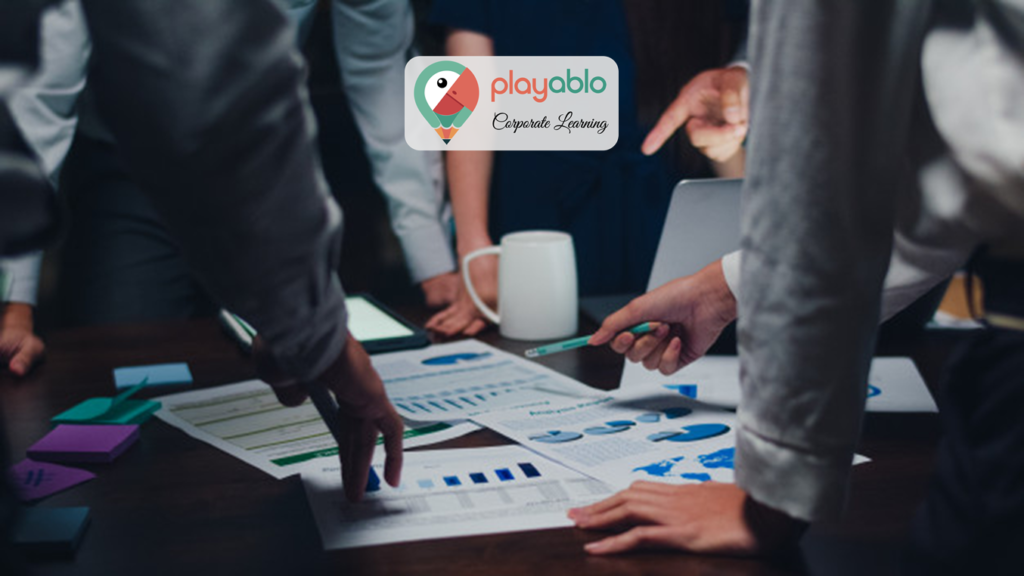Why is teaching learning materials through an LMS for millennials vital today? The digitally native workforce will soon comprise a major portion of the employee strength. And the current stats stand as proof of our claim. According to a Pew Research report, Millennials (individuals born between 1980 and 1995) comprise the largest chunk of company employees.
Here is what the paper says: “More than one-in-three American labor force participants (35%) are Millennials, making them the largest generation in the U.S. labor force … While the Millennial labor force is still growing, partly due to immigration, it is unlikely that the Millennial labor force will reach the peak size of the Boomer labor force (66 million in 1997). The Census Bureau projects that the Millennial population will peak at 75 million. At that number, a high rate of labor force participation would be needed to reach a labor force of 66 million.”

On the other hand, Generation Z, born between 1995 and 2015, rapidly gained corporate world positions. They are the next segment, which will grab a major chunk of the workforce in the coming years. Now, here is the thing. Gen Z and Millennials are drawn to technology and have distinct learning styles.
In both cases, you must have an LMS for Millennials and Gen Z for teaching learning material– that’s fully equipped to match each generation’s preferred style of learning. But before understanding how to design the perfect LMS, let’s get an idea of both these generations’ behavioral traits.
Table of Contents
How Are Millennials and the Gen Z Different in Terms of Their Learning Traits?
According to the Way to Work survey conducted by Adecco, here are the key differences between Millennials and Generation Z when it comes to teaching learning material:
- Members of Gen Z are more concerned about the cost of education (21% of respondents) than Millennials (13% of respondents).
- Millennials value stability (34%), while Gen Z emphasizes finding their dream job (32%).
- More Gen Zers follow their parents’ influence (42%) than their Millennial counterparts (36%).
How do you address these traits and develop a dynamic curriculum while teaching learning material that addresses Millennial and Gen Z workers’ distinct user preferences? Let’s get started!
Read More: 7 Millennials Learning Habits in Our Workforce
Strategies to Design a Comprehensive and Agile LMS for Millennials and Gen Z
1. Keep Employees at the Center

When you start with the LMS framework for teaching learning material to Millennials and Gen Z, you need to give the prime focus to your end-users. Mind it! This is an experimental, repetitive, and iterative process. A recommended approach is to kick off the process with a survey — containing questions that answer their wants, needs, and objectives.
Please note here that the digitally native Millennials and Gen Zers prefer a dynamic, enriching workplace culture where they can get opportunities to update their skills as technology boosts the rate of change in their careers. They are huge admirers of flexibility and independence in their professional education.
Once you have an idea of your employees’ preferences, you can ensure that you continually update your training modules with fresh, targeted, and relevant content for teaching learning material. You must also ensure that the teaching learning material format is digitally appropriate.
Certain types of formats for teaching learning material that have made waves in recent years are micro-learning and mobile training. The courses must provide a seamless LMS experience across multiple platforms. On the other hand, the knowledge segments should be engaging, customized, and immersive.
Ad: PlayAblo’s Enterprise-Grade Micro-Learning platform is for the modern corporate learner. Micro-Learning, along with assessments and gamification features, ensures learning outcome measurement along with sustained engagement.
Find out more and request a custom demo!
Wired states, “Although the millennial generation has a unique, evolving set of needs around interactive technologies, the ability to examine millennial behavior online gives companies the power to evolve with this crucial generation.”
Additionally, this tech-savvy generation prefers all-inclusive platforms for teaching learning material, which serve as a one-stop-shop for all their requirements. Adding to these revelations, LinkedIn says: “43% of Gen Zers prefer a fully self-directed and independent approach to learning.”
Read More: eLearning and the Non-Millennials
2. Define Areas of Improvement

Once you have access to all the information regarding your young learners’ specific needs, you can start carrying out detailed research on industry-specific courses (for teaching learning material) that will give the required value addition. Now, you can decide where your LMS for Millennials and Gen Z needs improvements.
Spot and select the most significant problem areas. Next, outline the precise solution to remove this pain point. Distribute these objectives and additional information to your LMS designing team, and they can create new functionality and features, which will serve as a long-term solution.
3. Keep Things Unique
After your LMS development team has selected the areas of improvement in your existing LMS for Millennials for teaching learning material, your next step is to hold sessions — which include your design squad and internal stakeholders.
Hold brainstorming meetings to create new ideas for implementation. Do note that Millennials and Gen Zers have a knack for social collaboration. The final LMS platform you design must be unique — complete with fresh and informative content, visuals, and microlearning modules that learners can access on the go.
Ad: PlayAblo’s Enterprise-Grade Micro-Learning platform is for the modern corporate learner. Micro-Learning, along with assessments and gamification features, ensures learning outcome measurement along with sustained engagement.
Find out more and request a custom demo!
Before arriving at the final design, consider all ideas that can enhance the entire LMS experience for teaching learning material. Invest enough time on how you can improve the structure and make it more interesting. Make sure that your interface is user-friendly.
Incorporate a feedback system, which will enable you to gather honest reviews about your employees’ learning experience. After everything, kick off the process by creating a storyboard or a mindmap. During the brainstorming sessions, ensure that your employees can share opinions in an open and stress-free environment.
4. Design a Prototype
Of course, anything is not successful without trials and errors. And this is applicable to your LMS for Millennials and Gen Yers. In the fourth step, you must experiment and turn ideas into a curriculum. You can then organize a beta test before the full launch.
In a prototype, you plan to add a few new vital modules to your regular course offerings for teaching learning material. You can also go for a scaled-down version of the improved LMS, which you can finally share with your staff. Prototyping is a crucial stage. It allows you to delete, improve, or redesign modules as and when necessary.
5. Implement the Prototype and Have a Test Trial
Finally, once you are confident about your prototype, share it within your organization. Give users plenty of scopes to provide honest feedback. Here, you must make sure to consider the opinions of employees from all age groups. Encourage your testers to evaluate the LMS for usability, engagement level, commitment required, and relevance. Once you have the feedback ready, use this information to finalize your new curriculum.
Keep in mind that designing a comprehensive LMS for teaching learning material to Millennials and Gen Zers is not easy. You have to make sure that you include evaluation and testing at each phase. You may have to go back and revamp learning modules when fresh ideas surface. So that is our final takeaway. Just as you need to scale your business, you also need to update your LMS regularly!







3 Comments
Comments are closed, but trackbacks and pingbacks are open.